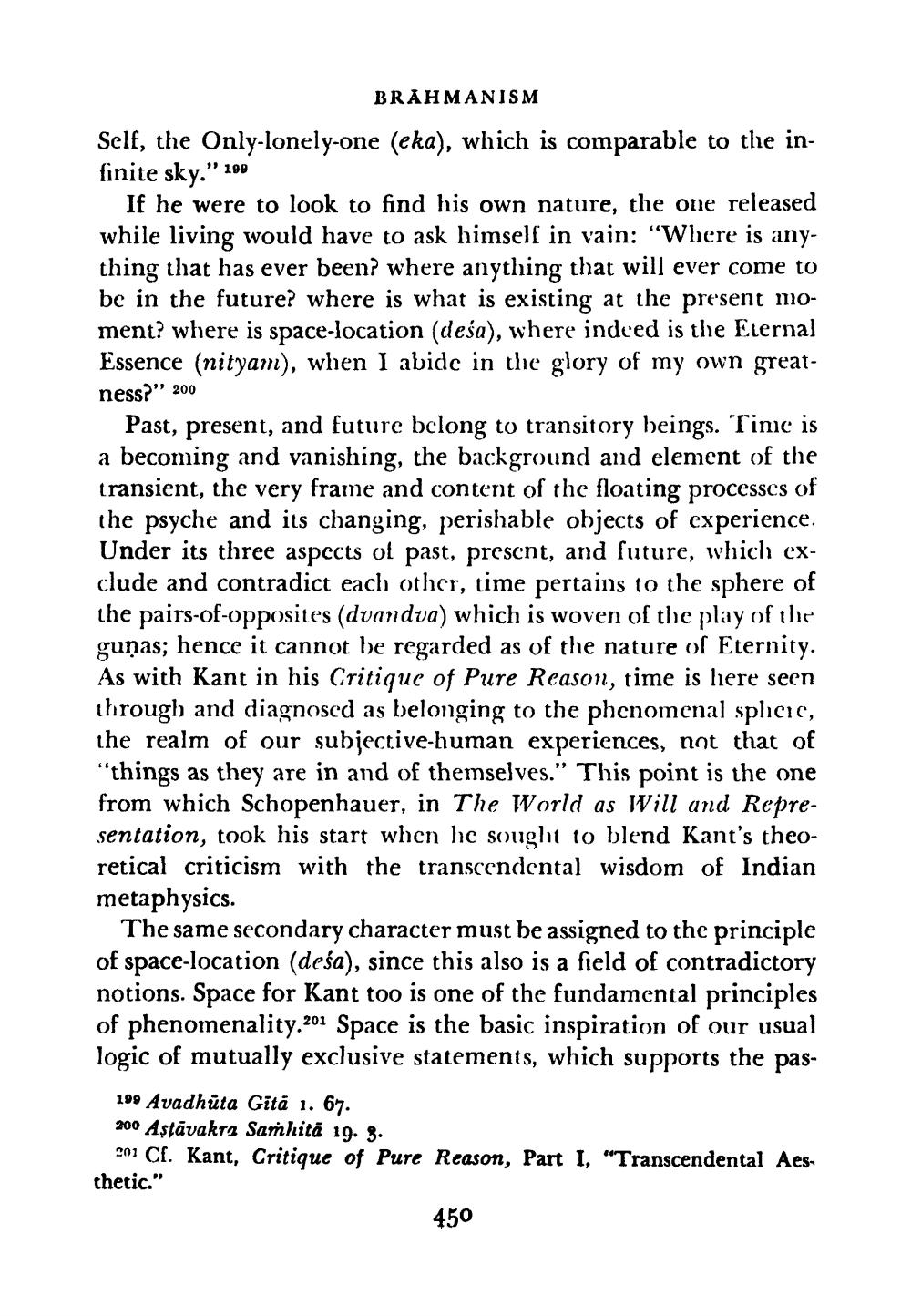________________
BRAHMANISM Self, the Only-lonely-one (eka), which is comparable to the infinite sky.” 199
If he were to look to find his own nature, the one released while living would have to ask himself in vain: "Where is anything that has ever been? where anything that will ever come to be in the future? where is what is existing at the present moment? where is space-location (deśa), where indeed is the Eternal Essence (nityam), when I abide in the glory of my own greatness?" 200
Past, present, and future belong to transitory beings. Tinc is a becoming and vanishing, the background and element of the transient, the very frame and content of the floating processes of the psyche and its changing, perishable objects of experience. Under its three aspects of past, present, and future, which exclude and contradict each other, time pertains to the sphere of the pairs-of-opposites (dvandva) which is woven of the play of the guņas; hence it cannot be regarded as of the nature of Eternity. As with Kant in his Critique of Pure Reason, time is here seen through and diagnosed as belonging to the phenomenal sphere, the realm of our subjective-human experiences, not that of "things as they are in and of themselves.” This point is the one from which Schopenhauer, in The World as Will and Representation, took his start when he sought to blend Kant's theoretical criticism with the transcendental wisdom of Indian metaphysics.
The same secondary character must be assigned to the principle of space-location (deśa), since this also is a field of contradictory notions. Space for Kant too is one of the fundamental principles of phenomenality. 201 Space is the basic inspiration of our usual logic of mutually exclusive statements, which supports the pas
199 Avadhūta Gitá 1. 67. 200 Astāvakra Samhita 19. g.
201 Cf. Kant, Critique of Pure Reason, Part I, “Transcendental Aesthetic."
450




